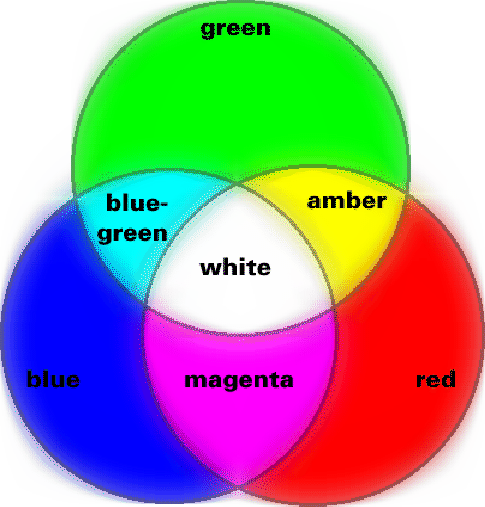Prefect's Pages.. Publications .. IQP .. Light Mixing (original) (raw)





Next: Practical Use of Color Up: Color Previous: Primary, Secondary and Complementary Contents Index
With pigments, if you mix equal amounts of pure red, yellow and blue, you end up with black. Light can be mixed in a similar fashion, with the primary difference being that light mixes towards white rather than black. That is to say, with equal amounts of pure red, green and blue, white is the final result. This type of mixing of light is called additive mixing. It should be noted that complementary colors mix together to form white. Figure 5.10provides an effective way to visualize additive color mixing.
**Figure 5.10:**Additive mixing of the primary colors. Assuming equal color purity and intensity of the three primaries, they will mix to form white (center).
 |
|---|
Steve Richardson 2000-07-06
Use of information in this document implies understanding and agreement with the copyright and terms of use. Specifically, no warranty is expressed or implied regarding the accuracy of the information contained within. YOU USE THIS INFORMATION AT YOUR OWN RISK. All trademarks are property of their respective owners. You must obtain permission from the author before using the contents of The Handbook for anything other than private use.